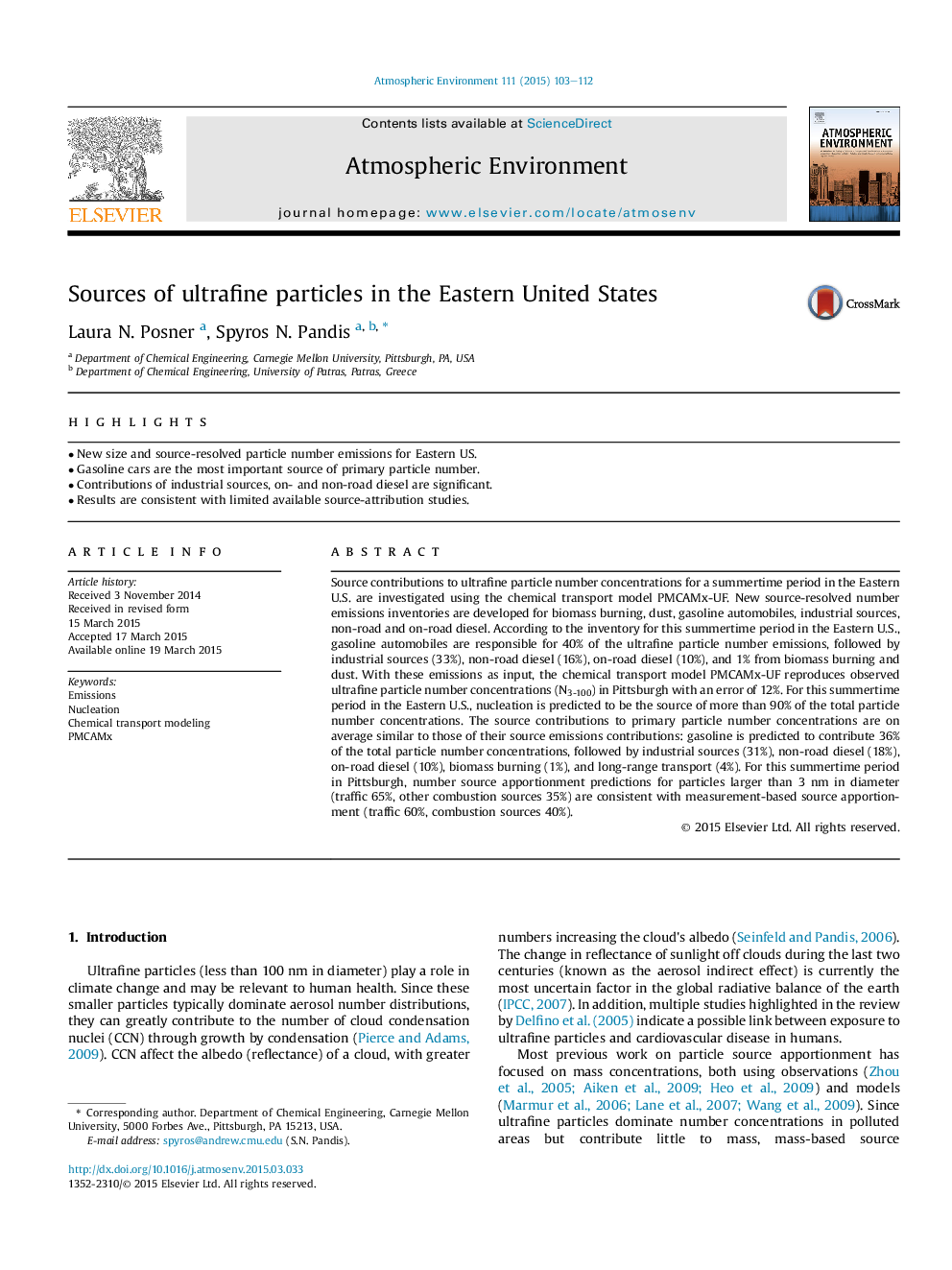| Article ID | Journal | Published Year | Pages | File Type |
|---|---|---|---|---|
| 6337942 | Atmospheric Environment | 2015 | 10 Pages |
Abstract
Source contributions to ultrafine particle number concentrations for a summertime period in the Eastern U.S. are investigated using the chemical transport model PMCAMx-UF. New source-resolved number emissions inventories are developed for biomass burning, dust, gasoline automobiles, industrial sources, non-road and on-road diesel. According to the inventory for this summertime period in the Eastern U.S., gasoline automobiles are responsible for 40% of the ultrafine particle number emissions, followed by industrial sources (33%), non-road diesel (16%), on-road diesel (10%), and 1% from biomass burning and dust. With these emissions as input, the chemical transport model PMCAMx-UF reproduces observed ultrafine particle number concentrations (N3-100) in Pittsburgh with an error of 12%. For this summertime period in the Eastern U.S., nucleation is predicted to be the source of more than 90% of the total particle number concentrations. The source contributions to primary particle number concentrations are on average similar to those of their source emissions contributions: gasoline is predicted to contribute 36% of the total particle number concentrations, followed by industrial sources (31%), non-road diesel (18%), on-road diesel (10%), biomass burning (1%), and long-range transport (4%). For this summertime period in Pittsburgh, number source apportionment predictions for particles larger than 3Â nm in diameter (traffic 65%, other combustion sources 35%) are consistent with measurement-based source apportionment (traffic 60%, combustion sources 40%).
Related Topics
Physical Sciences and Engineering
Earth and Planetary Sciences
Atmospheric Science
Authors
Laura N. Posner, Spyros N. Pandis,
